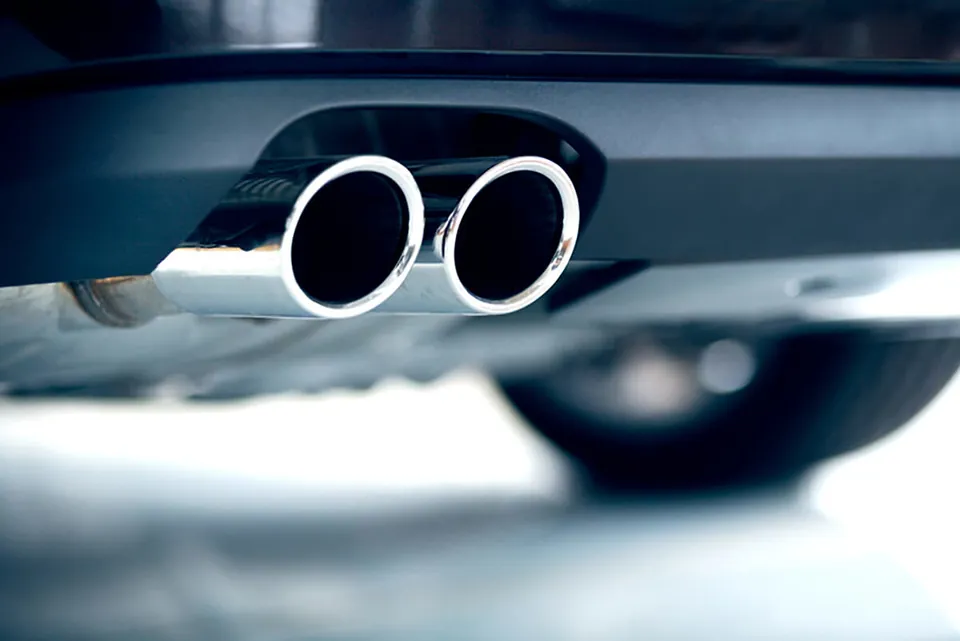Three years ago the Government was trumpeting its latest motorist-friendly policy. It planned to increase the national speed limit on motorways to 80mph.
It was said the new, higher speed limit would be introduced where appropriate and would be good for business, allowing journeys to be completed more rapidly.
The policy never made it into law and if developments since then are any indication, we might in fact be compelled to travel more slowly on motorways in future.
The reason is air quality, and the UK’s obligation to meet European rules.
The Government held a consultation earlier this year on reducing the speed limit to 60mph on a stretch of the M1 in Derbyshire and South Yorkshire covering more than 30 miles, as well as part of the M3 in Surrey.
The plan to introduce the limits has been put on hold while the Highways Agency investigates alternatives to imposing the restrictions.
These include erecting high barriers along areas at most risk of polluting local communities to help direct traffic exhaust fumes away from them as well as different ways of measuring local air pollution.
Peak-time hard shoulder use
During the last few years a number of motorways have been adapted to enable running on the hard shoulder at peak times to improve traffic flow and reduce congestion, creating so-called ‘smart motorways’.
But the Highways Agency has expressed concern that in some areas the higher volume of traffic travelling at high speed is breaking EU emissions limits.
The present government is committed to maintaining the 70mph limits when appropriate, although variable speed limits are imposed during busy periods on smart motorways.
At the time the consultation results on the M1 scheme were published, transport minister Patrick McLoughlin said: “Let me be absolutely clear, I want all motorways to run at 70mph. While it sometimes makes sense to use variable limits to keep people moving, blanket reductions are not acceptable.
“Smart motorways are an effective and cost-efficient way of increasing space on our roads, cutting jams and speeding up journey times and I am pleased to announce the start of work on these schemes.”
His views were criticised by the Green Party, which claims that as well as cutting pollution, reducing motorway speed limits to 60mph would also reduce costs for drivers, as fuel consumption would be lower, while increasing capacity because braking distances would be shorter.
The Department for Transport said it had hoped pollution would also be reduced by the adoption of more low- emission vehicles, but progress on that front had been slower than expected.
Financial measures
In urban areas air quality problems are often acute and congestion caused by the volume of vehicles adds to the problem.
The London Congestion Charge zone has perhaps illustrated how drivers and businesses can be influenced by financial measures. When the zone was introduced in 2003 the charge for entering was £5 a day. Since then the charges have been increased and are now £11.50 per day.
Initially, at least, there was a significant impact on congestion in London, but as discounts were steered away from ‘alternative fuel’ vehicles (which included all hybrids and many LPG-converted cars and vans) and toward a low-CO2 regime, the impact on air quality has been significant.
A study by Transport for London suggests that even if current traffic flow is maintained within the zone, air quality standards should improve because of the choices made when people replace their vehicles.
The report said: “It is likely that the emissions benefits of the scheme will be lower in absolute levels (in tonnes of emissions abated) in future years, when compared against the baseline conditions that would have existed without the scheme in place.
“This is because emissions from the fleet will fall anyway with the introduction of later Euro standards. To illustrate, while a 16% reduction in estimated emissions has occurred with the scheme in place, around 25% of this improvement is due to the changes in the vehicle fleet (and would have happened in the absence of the scheme).”
Vehicles with CO2 emissions of 75g/km or less are now eligible for a discount on the scheme, which excludes all but a handful of the most fuel-efficient vehicles on sale.
London has plans for even tighter restrictions on vehicles from 2020, with the introduction of an ultra-low emission zone (ULEZ). It would operate within the same boundary as the congestion charge zone.
While the aim is to encourage use of lower-CO2 vehicles, the scheme also aims to restrict emissions of oxides of nitrogen (NOx), gases which are produced at higher levels in diesel vehicles compared with petrol ones.
A report on the ULEZ proposals for the London Assembly in February 2014 stated: “Duty and new-car CO2 targets for car manufacturers are in place to encourage lower-CO2 vehicles.
“Diesel vehicles tend to have lower CO2 emissions than petrol but significantly higher NOx emissions. ULEZ standards will aim to ensure that there is no detrimental impact on CO2 or NOx.”
Any diesel vehicle that does not achieve Euro 6 emissions compliance will be subject to a £10 penalty under the proposals, on top of any fees to enter the London congestion charge zone.
It is unlikely that any fleet would be operating diesel cars that do not meet Euro 6 regulations by 2020, based on typical fleet lifecycles and the fact that many car manufacturers are now in the process of introducing new and updated diesel engines to ensure they meet the rules by next year.
And fleets should also not worry about a potential impact on residual values, based on the fact that a particular specification of diesel engine would be less desirable for use in London than another.
Impact on demand for diesel
Mark Norman, a senior consultant at CAP, said: “Too few cars are affected by the current proposal to have any impact on demand for diesel cars, whether or not they come under the scope of the envisaged daily £10 charge for entering central London.
“The picture might change if more cities adopt ultra-low emission zones and drivers find themselves paying more penalties but there is still a long way to go before that point.
“Car values are simply not that sensitive to localised factors, as we have already learned from London’s existing congestion charge.
“If they were we might have seen the values of electric vehicles rising in and around the capital but there is precious little evidence of any difference in residual values between different areas in the country.”
As we enter an election year, little has been said on air quality as other issues that are potentially bigger vote winners have taken priority.
The Coalition’s programme for government in 2010 stated: “We will work towards full compliance with European air quality standards,” a rather vague promise.
Given the particular problems associated with air quality in London, mayor Boris Johnson, who will be standing as a Conservative MP at the next election and is thought to have ambitions for party leadership, has been particularly vocal in his views on cleaning up emissions, including calling on the European Union to take more action.
Labour attacked the Government’s record on air quality during its party conference in September, saying a future Labour government would “deliver a national framework for Low Emission Zones to enable local authorities to encourage cleaner, greener, less-polluting vehicles to begin to tackle this problem”.
Emissions are targeted in a green strategy announced by the Liberal Democrats in September, including a Green Transport Bill with key measures that involve establishing a full network of charging points for electric cars, allowing only low-emission vehicles on the roads from 2040 and reforming planning law to ensure new developments are designed around walking, cycling and public transport.
Whatever party or parties are in power after the next election, vehicle emissions and their impact on air quality are likely to remain a key focus in the transport agenda.


















Bob - 03/12/2014 11:53
Just get out of the even more toxic EU now.